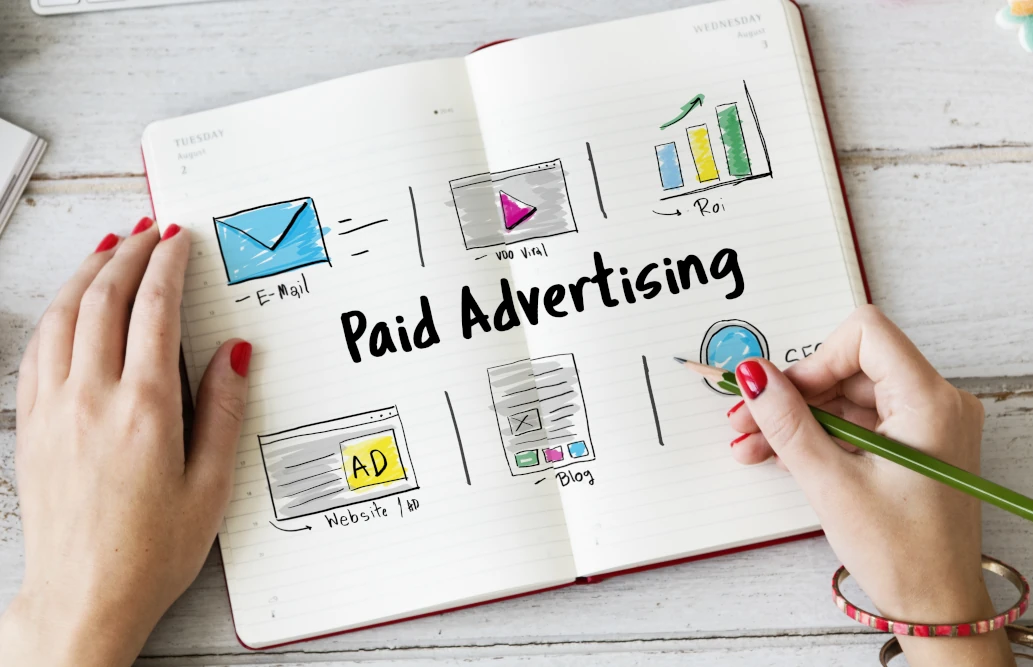For years, Google has been the undisputed king of search, owning about 90% of the market. Marketers built entire strategies around ranking on Google’s results page or running pay-per-click campaigns. But things are changing fast. The rise of artificial intelligence (AI) is shaking up the rules of search marketing and new players like
- Apple
- Microsoft
- OpenAI
- And Perplexity are making their mark.
If you’ve used tools like ChatGPT or Perplexity, you’ve already seen how different the experience feels. You don’t just type a few keywords anymore. You ask real questions, and the AI gives you an answer straight away — sometimes with sources, images, or even charts. This is not just an upgrade to Google; it’s a whole new way of finding information.
As someone who’s been working in search for a decade, I can tell you the old playbook of stuffing keywords, chasing backlinks, and outbidding competitors on ads won’t cut it for long. The future of search marketing is going to look very different. Here are five trends that every brand needs to understand.

Trend 1: Natural Language Queries Replace Keywords
Back in the day, you’d optimize a page for a phrase like “women’s white sneakers.” Today, users are more likely to type or say: “What are the best women’s white sneakers under $100 with no big logos?”
AI search engines care less about the exact phrase and more about the intent behind it. That’s a huge shift. Brands now need content that sounds
- natural
- answers real questions
- and goes deeper than surface-level keyword targeting.
Google’s own algorithms (BERT, MUM, and now AI Overviews) already reward content that demonstrates experience, expertise, authority, and trust (E-E-A-T). But with AI-driven search, the bar is even higher. Content must read like a direct answer to a conversation — not like it was written for a crawler.
👉 Example: A coffee shop in Vancouver could write a blog post titled “The Best Digital Marketing Strategies for Coffee Shops in 2025.” That piece might rank on Google, but more importantly, it could show up as a direct answer when someone asks an AI, “What marketing works best for small coffee shops downtown?”
Trend 2: Search Becomes Multimodal (Text, Voice, Visual)
Search isn’t just about typing anymore. It’s becoming multimodal — meaning users can search with text, voice, or images, often at the same time.
Think of Google Lens. You can snap a photo of a restaurant and ask, “Is this place open right now?” Or take a picture of a menu and say, “Show me the vegan options.” Apple is rolling out similar features with Siri and its new Apple Intelligence tools, while devices like Meta’s Ray-Ban smart glasses are making it easier to search on the go.
For brands, this means:
- Optimizing images with descriptive alt-text.
- Using schema markup for products, hours, reviews, and locations.
- And content should be written down in a conversational tone so it works well with voice search.
👉 Example: Imagine someone has a vegan bakery. If their photos are tagged correctly and their menu is optimized with schema, an AI assistant could instantly pull their name when someone points their phone at a street of bakeries and asks, “Where’s the nearest vegan option?”
Trend 3: Personalization and Predictive Search
AI doesn’t just answer questions; it learns from your history. If you’ve been looking for vegan restaurants in New York, next time you ask for dinner spots, the AI might show vegan places first.
This level of personalization changes both SEO and PPC. Brands need to create content and ads that anticipate what users want next.
PPC platforms are already leaning into this. Google Ads and tools like Albert or Adext use AI to adjust bids, titles, and descriptions automatically. Instead of blasting one ad to thousands of people, campaigns can now adapt in real time to what a user has searched before.
👉 Example: A travel company could notice you’ve searched for “cheap flights to Italy” and then show you a personalized deal for Rome the next day. That’s predictive targeting at work.
See this is very simple to understand that SEO personalization means creating content that isn’t one-size-fits-all. Brands should build resource hubs, FAQs, and guides that cover the full journey — from beginner queries to advanced ones — so AI tools have plenty of relevant content to pull from.
Trend 4: PPC Will Shrink, and Ads May Cost More

Google’s search results have always relied heavily on ads. But OpenAI’s CEO Sam Altman has said he’s not a fan of ads, and platforms like Perplexity already run on subscription models. If ad-free AI search catches on, we may see fewer ad slots available — which could push costs up for the ones that remain.
This means brands can’t depend on PPC alone. Even if you’re ready to spend more, fewer ad placements may exist. The safer bet is to invest in strong organic visibility so your brand shows up in AI answers without relying on paid slots.
👉 Example: Think about how competitive Google Ads became for lawyers or insurance companies. Now imagine that fight with half the ad space gone. That’s where search is heading.
Trend 5: Diversification Beyond Search
Here’s the big one: AI search tools often give users a complete answer right on the results page. That means people don’t always click through to a brand’s website anymore.
For marketers, this is a wake-up call. You can’t rely on search alone. Building direct connections with your audience is more important than ever — through email newsletters, social media, podcasts, and even offline events. These channels give you ownership of your audience in a way that search can’t.
There are chances that a fitness brand that only depends on Google traffic might loose its visibility as AI search now summarizes content. But a brand that has a strong YouTube channel, podcast and mailing list will keep engaging its audience no matter what search engines do.
Privacy, Data, and the Bigger Picture
AI isn’t the only factor reshaping search. Privacy rules are tightening too. Safari and Firefox already block third-party cookies, and Google is moving toward an opt-in model for Chrome. Users don’t want to be tracked everywhere — and regulators are backing them up.
That’s why first-party data is gold. Brands need to collect and manage their own data through site interactions, customer accounts, loyalty programs, and events. Tools like Google Analytics 4 help with this, but the real challenge is turning that data into better, more personalized experiences without crossing privacy lines.
In short, the brands that win will be the ones that balance personalization with trust.
Final Thoughts: The Future of Search Marketing
Search marketing is entering a new era. AI is rewriting the rules with
- natural language queries
- multimodal inputs
- predictive results
- and fewer ad opportunities
At the same time privacy concerns literally mean marketers must rely more on first-party data and less on third-party tracking. I know that’s a lot of change but it’s also a huge opportunity.
Brands that create human-focused, high-quality content and build direct relationships with their audiences will thrive. Those that cling to outdated tactics — obsessing over single keywords or throwing money at PPC — will fall behind.
The future of search isn’t just about ranking anymore. It’s about showing up in the right place, at the right time, in the right way — no matter how people search.
FAQs
Will AI replace traditional SEO?
Not completely because SEO is evolving. Keywords matter less but user intent, quality content and structured data matter more now.
Is PPC advertising going away?
Not entirely, but ad space may shrink and costs could rise as more AI platforms move toward subscriptions.
How can small businesses adapt to AI search?
Focus on natural, conversational content, make sure your images and data are optimized, and build strong direct channels like email and social media.
What’s the biggest opportunity in AI search for marketers?
Personalization. AI can deliver results tailored to each user, and brands that anticipate needs will have a huge advantage.


